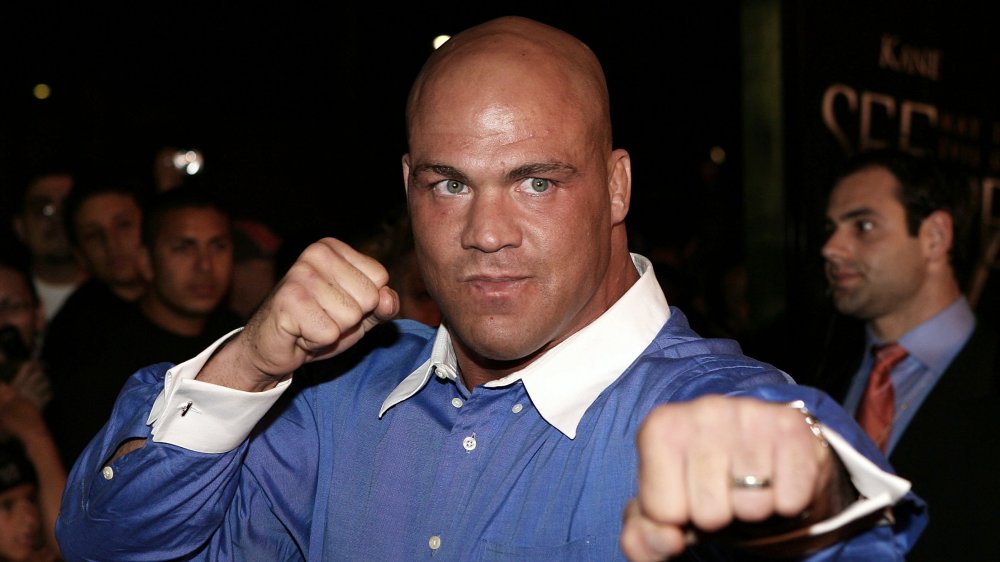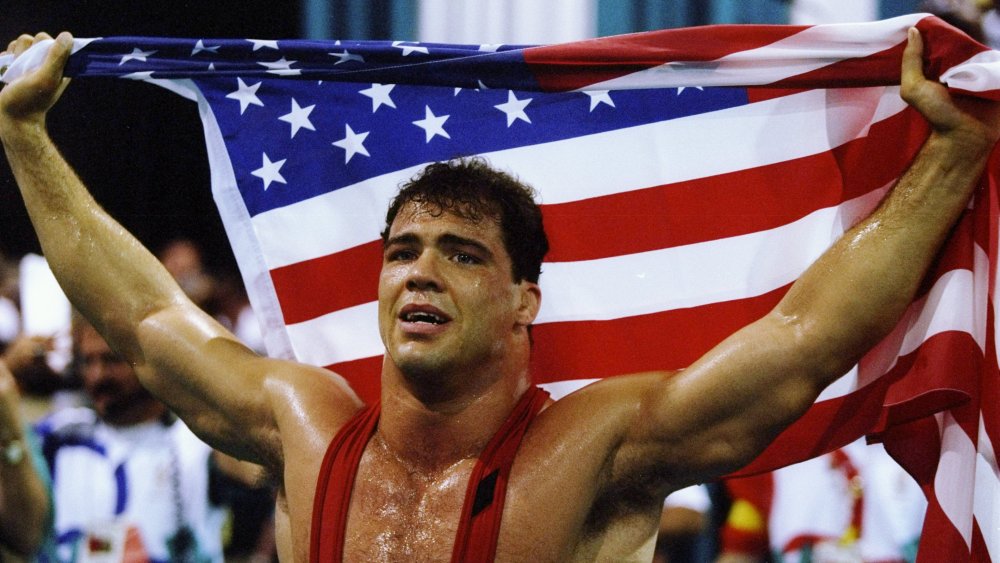The Serious Injury That Nearly Kept Kurt Angle From Olympic Gold
Kurt Angle is one of the more successful wrestlers out there, both in the amateur circles and the world of pro wrestling. He has won titles in promotions left and right, and as Tim Fiorvanti of ESPN reports, his accolades in the world of sports entertainment were so great that he was inducted in the WWE Hall of Fame in 2017. Oh, and as the official website of the Olympic Games reminds us, there's also the fact that Angle is a very legitimate Olympic winner, having won the gold medal in men's heavyweight freestyle wrestling in the 1996 Olympics.
However, Nicolas Atkin of ESPN tells us that Angle had to overcome a health situation that almost undermined his Olympic success. Let's take a look at the serious injury that nearly kept Kurt Angle from Olympic gold.
Yep, it's the neck
It turns out that Kurt Angle's famous catchphrase about winning things with "a broken freakin' neck" has its roots in reality. Six months before the games, his Olympic aspirations took an extremely nasty blow in a semifinal match in the national trials. Angle hit the mat on his head, which left him with two cracked vertebrae, two "bulged and herniated" disks, several pulled neck muscles ... and a situation where he was 3-0 down with only a minute left. Despite the agonizing injury, he still managed to win the match, survive the following one, and go on to become a national champion. There was just one problem: He would have to rest and heal for the next six months. The Olympic trials for Atlanta 1996 were only two and a half months away.
Despite the horrifying pain Angle subjected himself to whenever he wrestled, he kept training however he could, and saw different doctors until he found one who would clear him to wrestle. "Back then I was young and dumb, 26 years old," he says about his mindset at the time. "I didn't care about my health. I just wanted to get back into the game." Ultimately, Angle got his clearance, and resumed wrestling with a risky gameplan that involved getting a novocaine shot in the neck to numb the pain. This was a dangerous method that involved a very real chance of paralysis. However, the risk paid off, and Angle went on to win his famous Olympic gold, despite being smaller than the majority of his opponents.

